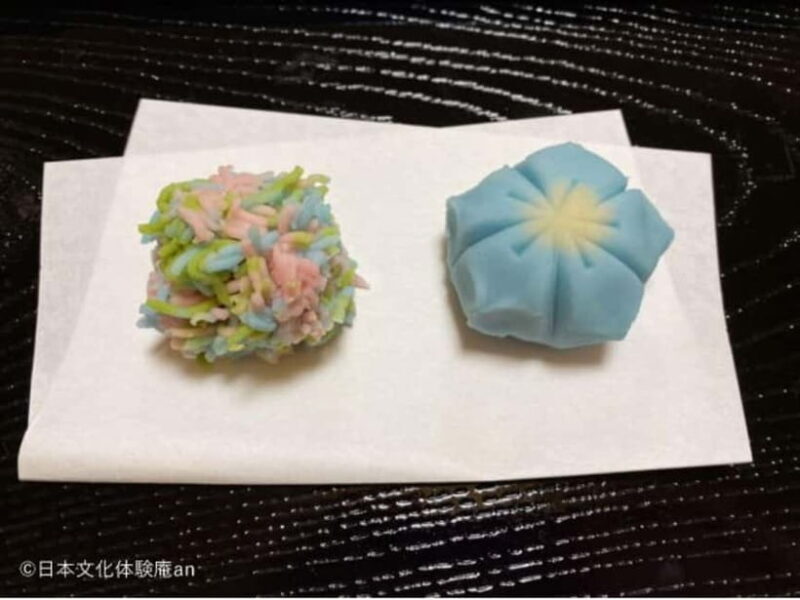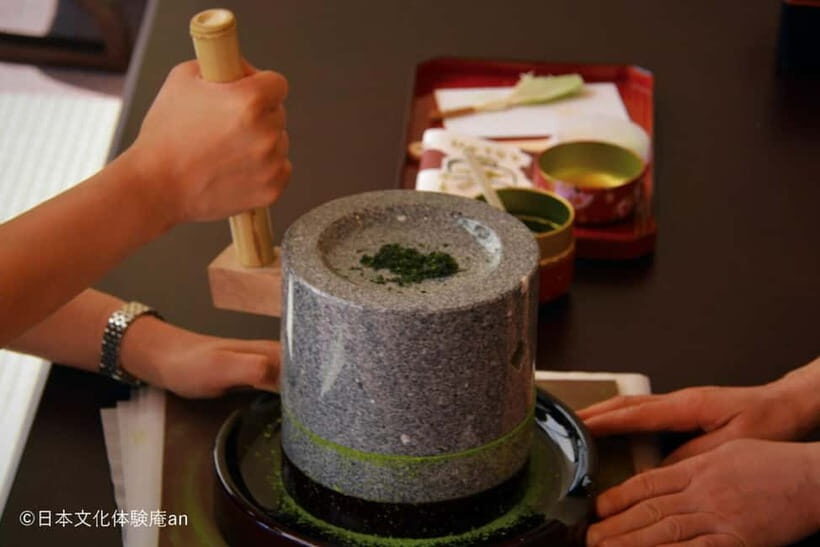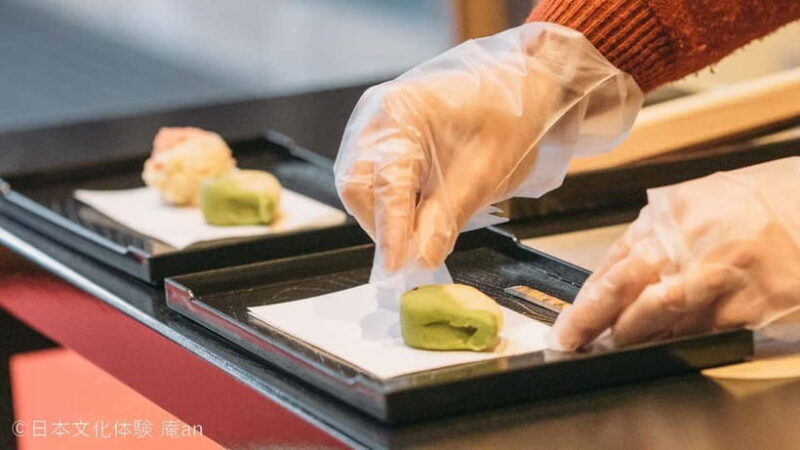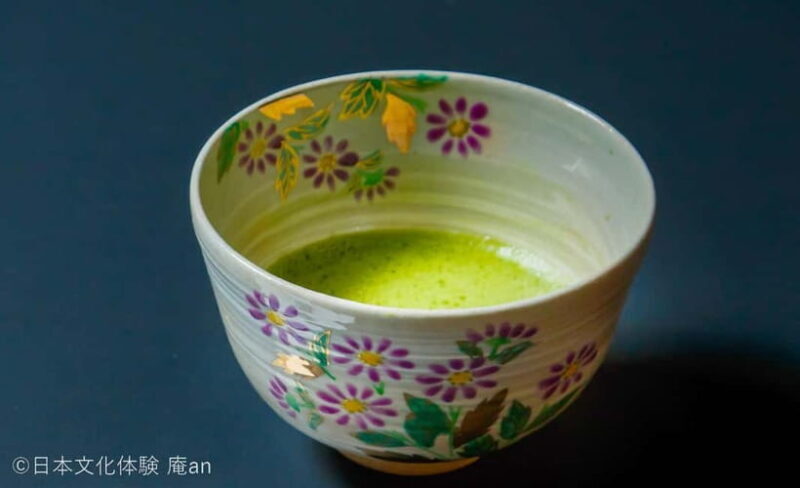Nagoya: Japanese Traditional Sweets Making and Tea Ceremony

Traveling in Japan often means exploring ancient temples, bustling markets, and stunning scenery. But sometimes, the most memorable moments come from engaging directly with local traditions. For those curious about Japanese culture, this experience in Nagoya offers a hands-on look at traditional Japanese sweets (“Nerikiri”) and a charming tea ceremony. Costing just $19 per person, it’s a surprisingly affordable way to gain insight into the artistry and etiquette behind two iconic practices.
The experience is centered around making beautiful, seasonal “Nerikiri” sweets using high-quality ingredients from Kyoto, and then enjoying a matcha tea prepared with a single-origin Uji Matcha. We loved how each step allowed us to learn and participate actively—no passive viewing here. Plus, the guides are praised for their clear, friendly instructions, making it accessible even for beginners.
One possible consideration is that the venue is on the third floor with no elevator, so it might not be ideal for travelers with mobility issues. Also, the session runs about 1 hour 45 minutes, so it’s a good fit for those with some free time in Nagoya. This experience suits travelers who enjoy creative activities, culture, and delicious treats—particularly families, solo travelers, or couples seeking a calm, authentic moment amidst Japan’s busy scene.
You can check availability for your dates here:Key Points

- Authentic Hands-On Experience: You will actively participate in making “Nerikiri” sweets, which are high-grade Japanese confections shaped like seasonal flowers and fruits.
- Quality Ingredients: The white and red bean pastes come from long-established Kyoto shops, ensuring a flavor profile that reflects true Japanese craftsmanship.
- Cultural Insight: The experience includes a tea ceremony with Uji Matcha, offering a glimpse into Japanese tea etiquette and flavor appreciation.
- Expert Guidance: Many reviews praise the knowledgeable and clear instructions from hosts, making the craft accessible and enjoyable.
- Affordable and Value-Packed: At $19, you get two distinct experiences—sweets making and a tea ceremony—plus a chance to create, taste, and learn.
- Family-Friendly: The activity is suitable for children, with some reviews highlighting how welcoming and supportive the guides are for young participants.
While in Nagoya, here are other experiences we've covered
A Practical and Authentic Cultural Journey in Nagoya

Located just a short walk from the subway’s Sakura-dori Line “Kokusai Center Station,” this experience is accessible and conveniently situated. It takes place on the third floor of a building, with no elevator, so be prepared if you’re traveling with mobility challenges. The program lasts approximately 1 hour 45 minutes, starting at 10:00 and ending around 11:45, making it easy to fit into a day’s sightseeing schedule.
From the outset, the guides explain the significance of the sweets and tea, setting a respectful and educational tone. The first part involves making “Kinton Nerikiri”, a refined sweet crafted from white bean paste that you color and shape into seasonal flowers or fruits. The process is surprisingly creative—our group enjoyed the chance to express ourselves through the colors and forms. Many reviewers appreciated how supportive and easy-to-follow the instructions were, with Lisa K noting, “Very good teacher and pleasantly happy with the outcome of the class.”
The ingredients are top-tier, with white and red bean paste from Kyoto’s long-established shops, which elevates the tasting experience. When we tasted the finished sweets, the balance of sweetness and delicate flavor made us appreciate the skill involved in traditional confectionery. As Joyce pointed out, “We love making the traditional treats and our guide was wonderful.”
Next, the focus shifts to the tea ceremony, where we learned about matcha—the finely ground green tea powder. A demonstration of how to grind and prepare the matcha sets the stage for a genuine tea experience. Our guide’s explanations made it clear that this isn’t just about drinking tea but about appreciating a centuries-old ritual. Many reviews, including Peter’s, mention how the host was supportive and attentive, making the process accessible even for beginners.
Finally, the sweets we made are served alongside the Matcha, creating a harmonious flavor experience—sweet, bitter, and earthy. Emma called it “an excellent introduction to Japanese sweets and tea,” emphasizing how memorable and educational it felt. Afterward, there’s time to take photos, savor your creations, and reflect on what you’ve learned.
The Experience Itself: What Makes It Special?

This workshop offers more than just a craft session; it’s an opportunity to understand Japanese aesthetics, patience, and tradition. The act of coloring and shaping the Nerikiri is meditative and satisfying, especially as you compare your work with others. Many travelers find joy in the visual beauty of their sweets, which resemble tiny seasonal artworks.
The tea ceremony portion adds depth, highlighting Japanese hospitality and mindfulness. The guide’s fluent English and friendly demeanor help demystify the process, making it approachable even if you’ve never touched a tea whisk before. The fact that many reviews mention the clear instructions and supportive guides means you’ll likely feel encouraged throughout.
Cost-wise, the $19 fee includes both sweets making and the tea ceremony, which is remarkable value considering the quality ingredients and expert guidance. Optional extras like a take-out box or a completion certificate are available for small additional fees, but they’re not necessary to enjoy the core experience.
The location’s proximity to Nagoya Station and other city sights makes this a convenient cultural break. It’s a perfect activity for those wanting a slow-paced, meaningful cultural encounter rather than a hurried tour.
Who Should Consider This Experience?
This experience is best suited for culture lovers, families, and curious travelers who want to partake actively in Japanese traditions. It’s ideal for those who appreciate artistic, hands-on activities and enjoy tasting high-quality ingredients. If you’re traveling with children, the supportive guides and family-friendly nature make it a good choice, as several reviews highlight.
It might not be the best fit for travelers with mobility issues due to the location’s stairs and lack of elevator access. Also, if you’re looking for a formal or full-length tea ceremony, this is a shorter, more approachable version—not a deep-dive into the ritual.
More Great Tours NearbyFinal Thoughts: Is It Worth It?

This Nagoya sweets making and tea ceremony offers genuine, tangible insight into two beloved Japanese traditions at a very reasonable price. It’s a practical, engaging way to slow down and enjoy a moment of artistry and mindfulness. You’ll leave with a sense of achievement, some delicious treats, and a better understanding of Japanese aesthetic and hospitality.
For travelers eager to learn through doing, this experience delivers both fun and education. It’s especially rewarding for those who appreciate small, authentic moments that reveal the care and craftsmanship behind Japan’s culinary heritage. Plus, it’s a memorable story to take home—literally, with the sweets you’ve crafted!
- From Nagoya: Crafting Traditions in Tokoname and Arimatsu
- From Nagoya: Inuyama Castle, Ena Gorge, Magome, Tsumago Tour
- From Nagoya: Hida Takayama and Shirakawa-go Winter Day Tour
- From Nagoya: Ises Sacred Shrines and Captivating Coastlines
- From Nagoya: Hida Takayama and World Heritage Shirakawa-go
- From Nagoya: Castles and Canals in Hikone and Omi Hachiman
FAQs

Can I participate if I don’t speak Japanese?
Yes. The guides provide explanations in English as much as possible, making this activity accessible for international visitors.
How long does the experience last?
Approximately 1 hour 45 minutes, starting at 10:00 and concluding around 11:45.
Is it suitable for children?
Yes, children are welcome, and reviews mention how supportive guides make it easy for kids to participate and enjoy.
What is included in the price?
The experience covers making two kinds of Japanese sweets and enjoying a matcha tea. Extras like a take-out box or certificates cost extra.
Where does the activity take place?
On the 3rd floor of a building near Kokusai Center Station, about a 1-minute walk from Exit 3 of the subway Sakura-dori Line.
Are there any physical limitations to consider?
Yes. The venue has no elevator, so it might not be suitable for those with mobility challenges.
Can I buy souvenirs or take home my sweets?
You can purchase a sweets take-out box for 100 JPY if you wish to bring your treats home.
When are the best times to book?
Operation hours are from 10:00 to 17:00. Book in advance to secure your preferred time, especially during peak seasons.
Is it suitable for a solo traveler?
Absolutely. It’s a friendly, group-oriented activity where you can meet other travelers and share the experience.
What should I wear?
Comfortable clothes suitable for hands-on activity; aprons are usually provided.
This experience in Nagoya offers a lovely, authentic taste of Japan’s sweet-making art and tea culture. Whether you’re a culinary enthusiast, a culture curious, or simply looking for a calming activity, it’s a delightful choice that balances value, education, and fun.
You can check availability for your dates here:More Dessert Tours in Nagoya
More Tour Reviews in Nagoya
More Nagoya experiences we've covered
- Nagoya: English-Guided Jogging Tour of the City (2 hours)
- From Nagoya: Kyoto Day Tour with Pork Shabu Shabu Lunch
- Photography Tour With Popular Photographer in Nagoya
- Nagoya Castle Walking Tour
- Private Tour-Nagoya sightseeing centred on Samurai Culture!
- Enjoyable One day Bus Tour From Nagoya
- From Nagoya Kyoto Day Tour with Kobe Beef Shabu Shabu Lunch
- With AI Translation Kimono Stroll in Shikemichi and EndojiStreets
- Rie Asai Traditional Japanese Performing Arts Experience Nagoya
- Samurai Legacy & Tea Ceremony | Unique Teahouse at Nagoya Castle
- Nagoya Kuro Montsuki Traditional Family Crest Dyeing Workshop
- Sake Heritage Nagoya Brewers Insights and Tastings tour
